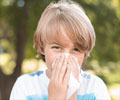Compared to other air borne allergens, mouse allergen was the most common in schools and it increases asthma symptoms, lowers lung function.

‘Exposure reduction strategies in the school setting may effectively and efficiently benefit all children with asthma.’





Classroom and home dust samples linked to the students were collected and analyzed for common indoor allergens, including rat, mouse, cockroach, cat, dog and dust mites. Associations between school exposure to allergens and asthma outcomes were adjusted for exposure to the allergens at home. Apart from mouse allergen, none of the other airborne allergens were associated with worse asthma outcomes. While cat and dog allergens were commonly detected in the schools, dust mite levels were low and cockroach and rat allergens were mostly undetectable in schools and homes.
Limitations of the study include results that may not be generalizable to other cities where other allergens may be predominant in schools.
"These findings suggest that exposure reduction strategies in the school setting may effectively and efficiently benefit all children with asthma. Future school-based environmental intervention studies may be warranted," the authors conclude.
Source-Eurekalert













